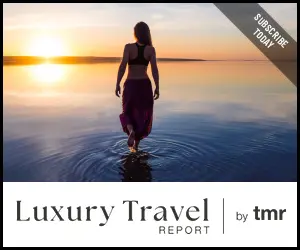Three Ships Sail Into Port—Only One Deserves the Luxury Label
Side-by-side in St. Thomas, three cruise ships claim the “luxury” title—but only one earns it.

Photo: Sean Pavone / Shutterstock
The classic joke starts, “Three [blank] walk into a bar.” But in this case, three examples of luxury cruise products docked in a port, and for at least one of them, the punchline was that the passengers bought tickets on it.
Side by side in St. Thomas, the contrast in onboard experience, guest demographics, and brand delivery was instantly visible. Not all luxury is created equal.
Classic Luxury: Formal, Familiar, and Facing a Reckoning
For some travelers, it can’t be called luxury unless it involves black coats, tails, and bow ties. They’ll gladly exchange modern dining for classic favorites. They’ll take an older ship with a style they like over a newer vessel filled with ostentatious accoutrements.
A few brands still lean into this model and are well-regarded for their attention to service and respect for tradition. Endless inclusions help mask their hard product shortcomings. On this day, staff stood 10–12 deep outside the gangway, handing out cold wet towels in full tuxedos under the scorching Caribbean sun. It was impressive, but also a little absurd.
Boomers are a population bubble, and as they begin slowing or stopping their travel, these brands must evolve or die.
Modern Luxury: Smart, Stylish, and Built for Now
A new wave of ships is shaking up the traditional model in favor of a modern, resort-style approach to luxury. These vessels skip banquet-style meals and opt for à la carte dining. Crew members wear polished yacht attire—shorts, polos, and occasionally (shriek!) even baseball caps.
They didn’t add satellite internet later—they were built with it. And today’s luxury traveler absolutely cares about WiFi speed in the middle of the ocean. If you can’t FaceTime, upload photos, or take a work call when needed, does it really feel luxurious?
These ships are designed with the needs of today’s affluent cruiser in mind—and they’re rewriting the rulebook while having fun doing it.
Just Expensive: Marketing Masking Mediocrity
The third ship in port, an ocean vessel from a primarily river cruise company, was the most dated of the three. The brand is recognizable, and its clients often believe they’re sailing on the best product, though that belief often stems from a lack of experience with the broader market.
The price point sends a message of exclusivity. But the truth? It’s not exclusive. The ships are tired, the onboard experience lacks classic charm and modern flair, and the service falls short.
When docked beside its competitors, this product pales in comparison in terms of service and hard products. The price convinces customers they’re in the same league as other luxury offerings—if they even bother to look around. But that lack of connection to the other two models keeps this ship’s sales afloat.
What It Means for the Future
The walk back to the ships after a beautiful day in St. Thomas made one thing clear: A dying ship without standout service or modern amenities is a model that’s run its course. With growing competition in the luxury cruise space, brands relying on outdated reputations and inflated prices won’t be able to coast on name recognition for much longer.
Today’s 60-year-old cruiser doesn’t want a banquet or to be told what time they’ll eat. They expect a great balcony, plenty of space, and a shower that doesn’t touch them when they close the door.
Some still want caviar on a surfboard at the beach—and why not? But they’d rather it come with scratch-made gelato than baked Alaska.
Classic luxury has staying power, but will need an update. Modern ships must find a way to attract traditional cruisers without losing their identity. And the just-expensive? Unless they innovate—and quickly—they’ll sink beneath rising expectations.
A Word to Advisors
Luxury advisors should take stock. Which ship model do your clients identify with today, and what will they want going forward? Are you selling them the best fit for their preferences, or are you just defaulting to historical brands that have failed to evolve?
With new entrants marketing aggressively and setting higher standards, it’s more important than ever to understand what modern luxury really looks like—and deliver on it.
Kyle Stewart has been a travel writer for over a decade and has appeared in the Wall Street Journal, TIME, Forbes, and Travel + Leisure, among other publications. He runs Scott & Thomas, a luxury travel agency, and when he isn’t traveling with his family of four, he splits time between Pittsburgh and Fort Myers.

